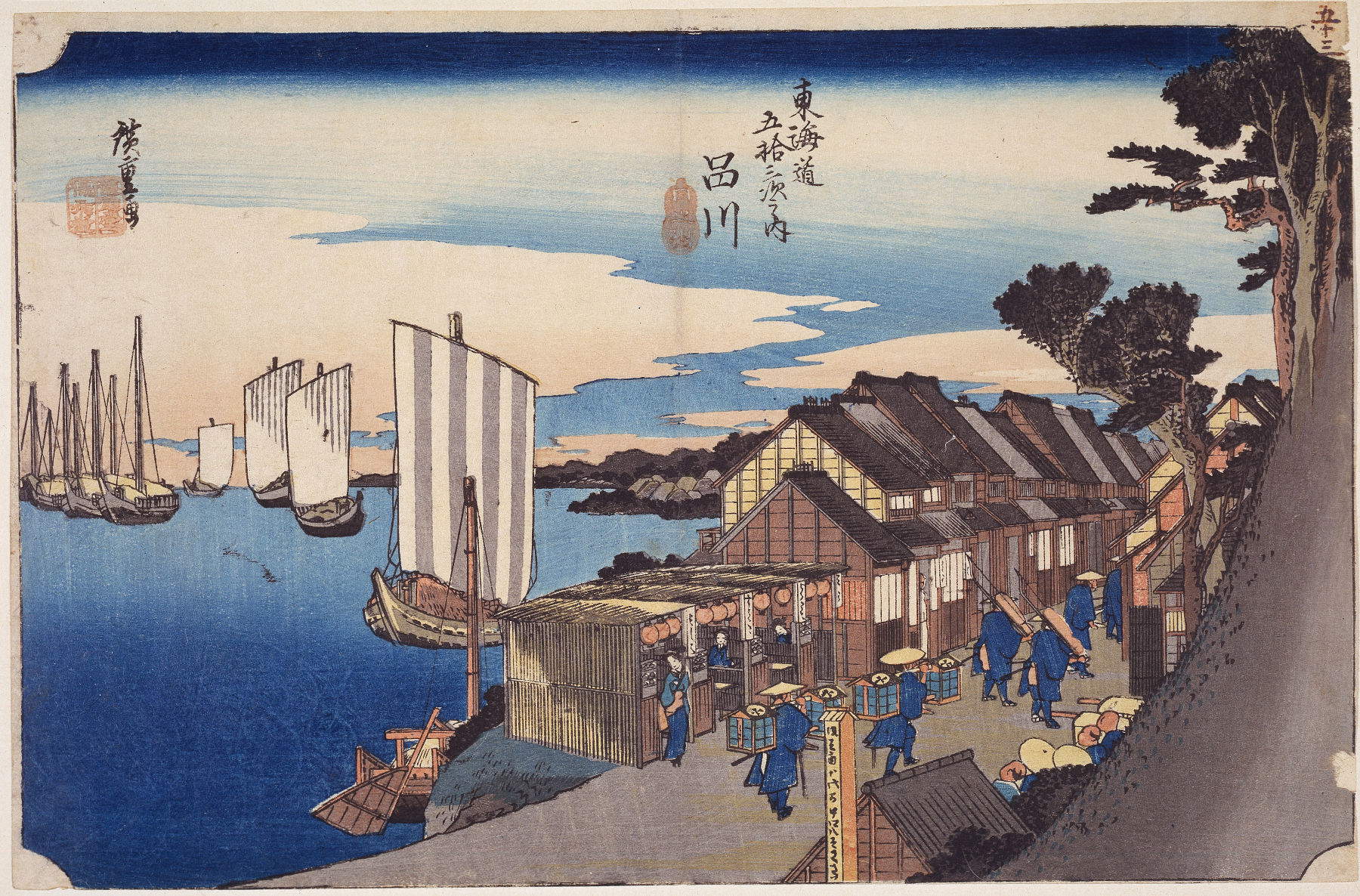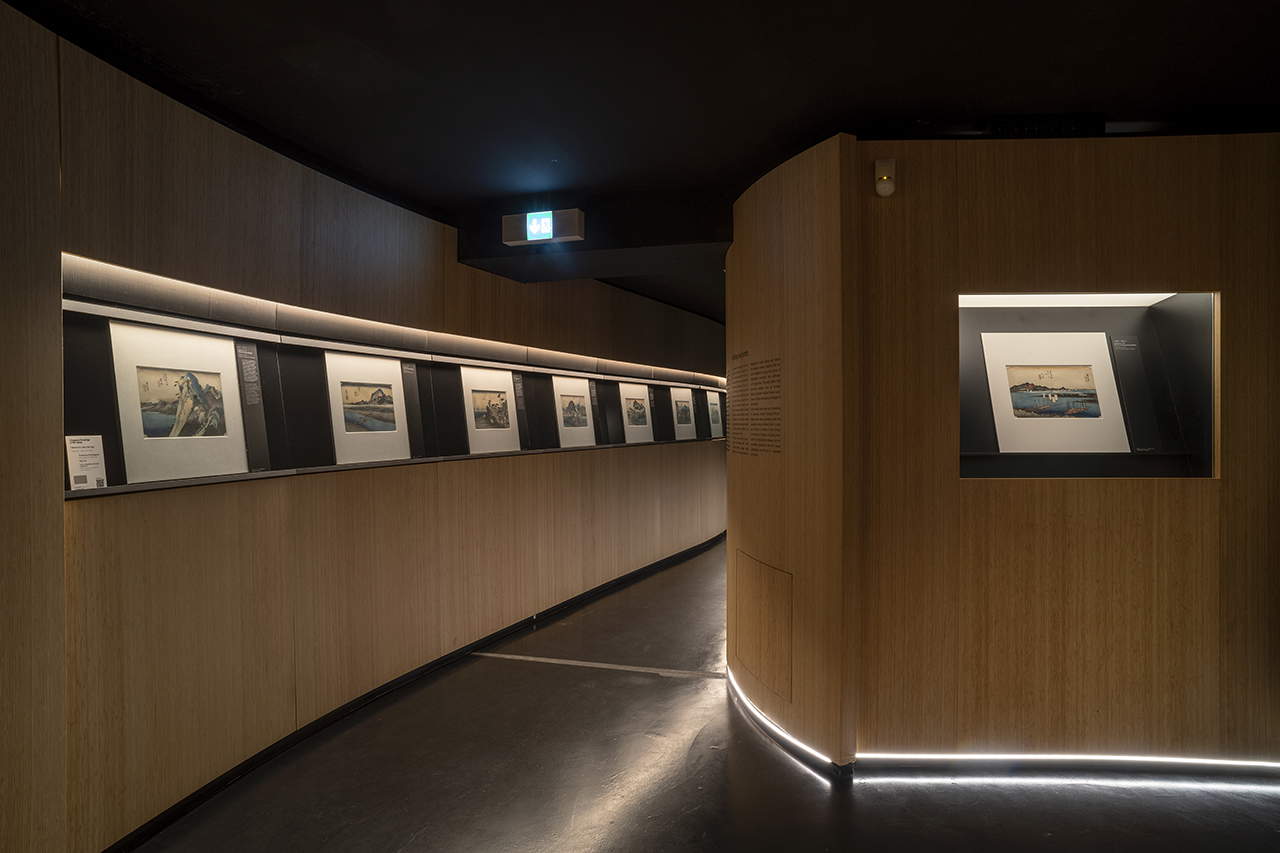The MAO - Museum of Oriental Art in Turin inaugurates a new exhibition dedicated to Japanese art and presents, until August 3, 2025, the first of three rotations from the series The 53 Stations of Tōkaidō by Utagawa Hiroshige (Edo, 1797 - 1858). At this initial stage, the exhibition includes 19 prints, which will be followed in the following months by two more selections of 18 works each, allowing the public to view the entire collection over the course of the year.
The initiative is part of MAO’s program of dynamic rearrangements and interventions designed to offer up-to-date reinterpretations of the permanent collections. In this case, the selection is accompanied by a new curatorial interpretation that is not limited to the simple display of the works, but aims to propose a new key to interpret Hiroshige’s series. The project stems from a collaboration with the Montreal Museum of Fine Arts (MMFA), with which the Turin museum shares not only the body of works, but also a curatorial approach that prioritizes sustainability and the enhancement of scientific thinking in the management of exhibition resources.


In fact, both museums preserve a complete set of the 53 Tōkaidō stations identical in edition and quality. This allows for innovative project management: it is not the works that travel, but the curatorial apparatus, interpretation, and educational content. The Turin installation uses materials, texts and solutions devised by the Canadian museum, which in 2024 had presented the same series following the same thematic key. It is curated by Laura Vigo, curator of Asian art at the MMFA. The 53 stations of Tōkaidō were first produced in 1833 by Hiroshige and published by the Hōeidō publishing house, headed by Takenouchi Magohachi. The work was an immediate success, helping to redefine the very identity of ukiyo-e, Japanese woodblock prints. With more than 15,000 copies printed, the series became a bestseller of the Edo era. Individual woodcuts were purchased inexpensively, estimated to be as much as a bowl of ramen, and reached a wide audience of travelers, readers, and curious citizens. Many of these prints were subsequently forgotten, only to be rediscovered and revalued in the West in the second half of the 19th century.
The success of the series was due in large part to the artistic insight of Hiroshige, who came from a samurai family and was able to reinterpret a then widely popular theme. The journey along the Tōkaidō-the approximately 490-kilometer road that connected Edo (now Tokyo) to Kyoto-was already the subject of descriptions and images. However, Hiroshige applied a new language to it that could combine realism and imagination, accessibility and formal refinement. The artist integrated Western influences such as central perspective and shading into the composition, experimented with the horizontal format, and used synthetic blue, a modern pigment that characterizes many of his best-known prints. Each stage of Tōkaidō depicted in a print takes on the value of an evocative scene in Hiroshige’s series: more than a simple landscape account, a visual fragment that condenses suggestions, atmospheres, and imagery. The prints tell of Tokugawa Japan as a space in transformation, traversed by figures on the move, daimyo, pilgrims, merchants, travelers, who populate inns, bridges, countryside and markets. Elements of the everyday mingle with fantastical visions, transforming the experience of travel into a continuous visual narrative.


A key element of the project was the role of editor Takenouchi Magohachi, who also contributed to the narrative and graphic layout of the series. The entire series was conceived as a kind of storyboard ante litteram, with a narrative thread designed for a literate and curious audience. The commercial aspect did not hinder, but rather reinforced, the innovative charge of the project, which stood at the crossroads of art, publishing, and mass communication. The Tōkaidō, officially established in 1601 as one of Tokugawa Japan’s five great arterial roads, connected the two capitals of power, Edo, seat of the shogunate, and Kyoto, imperial residence. Along the route stood 53 post stations, each equipped with infrastructure to accommodate travelers: lodging, food, transportation, stores and, in many cases, entertainment services. This system was the basis of the country’s internal modernization, fostering trade and the circulation of ideas. Hiroshige’s prints render the variety of these places, the vitality of their protagonists, and the sense of the continuous movement that ran through the society of the time.
 |
| Hiroshige along the Tōkaidō: MAO exhibits 19 prints from the famous series |
Warning: the translation into English of the original Italian article was created using automatic tools. We undertake to review all articles, but we do not guarantee the total absence of inaccuracies in the translation due to the program. You can find the original by clicking on the ITA button. If you find any mistake,please contact us.